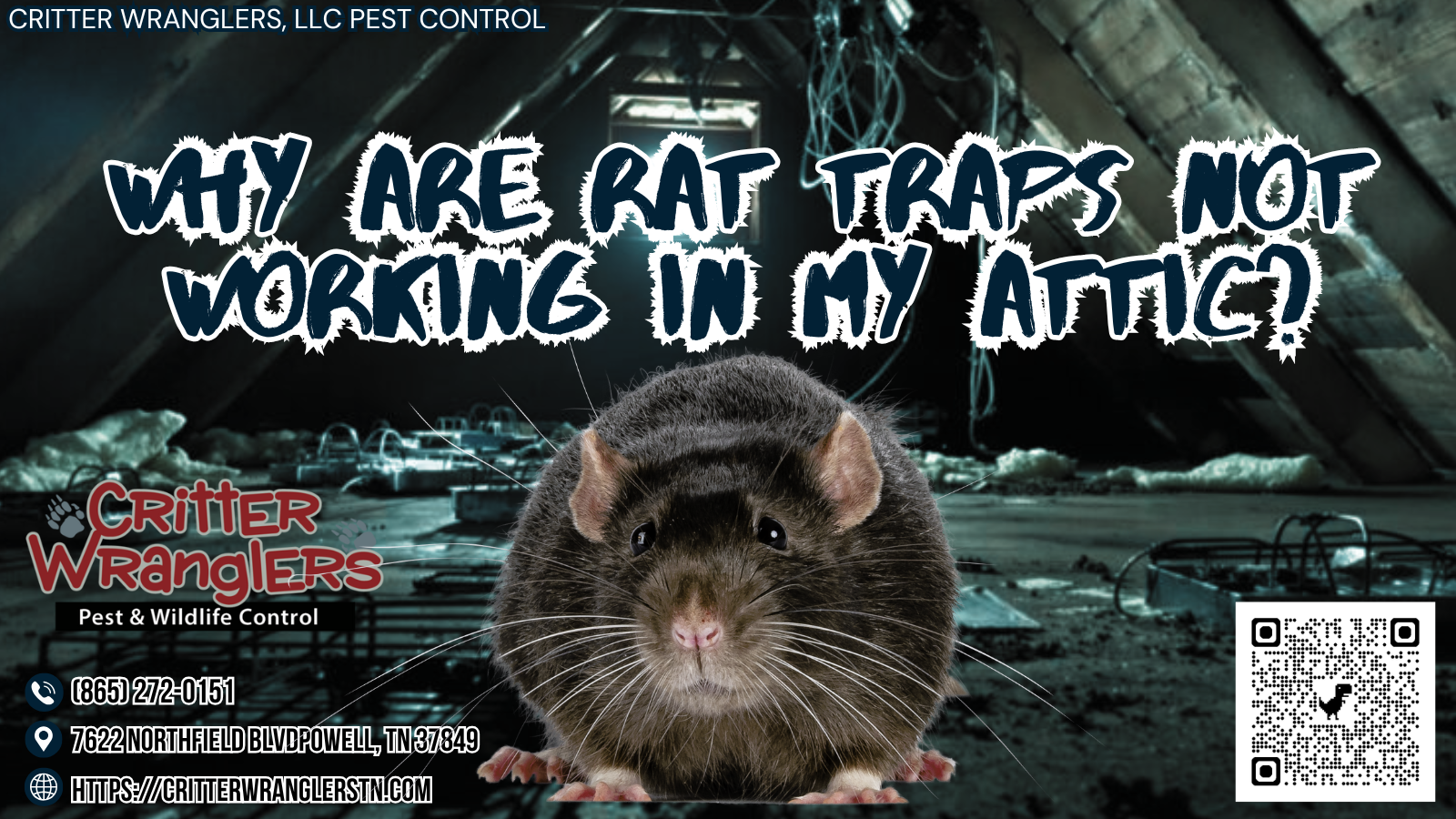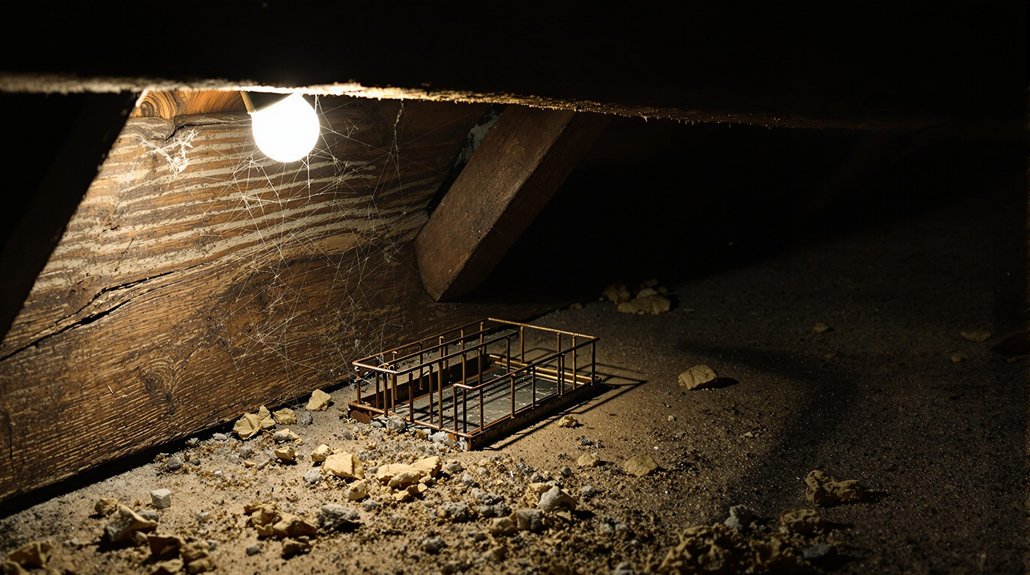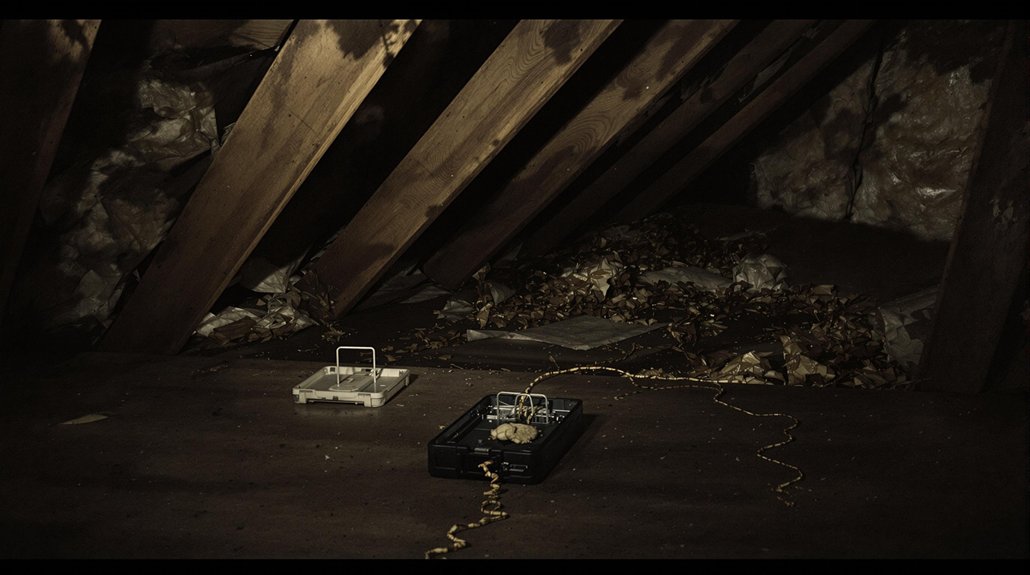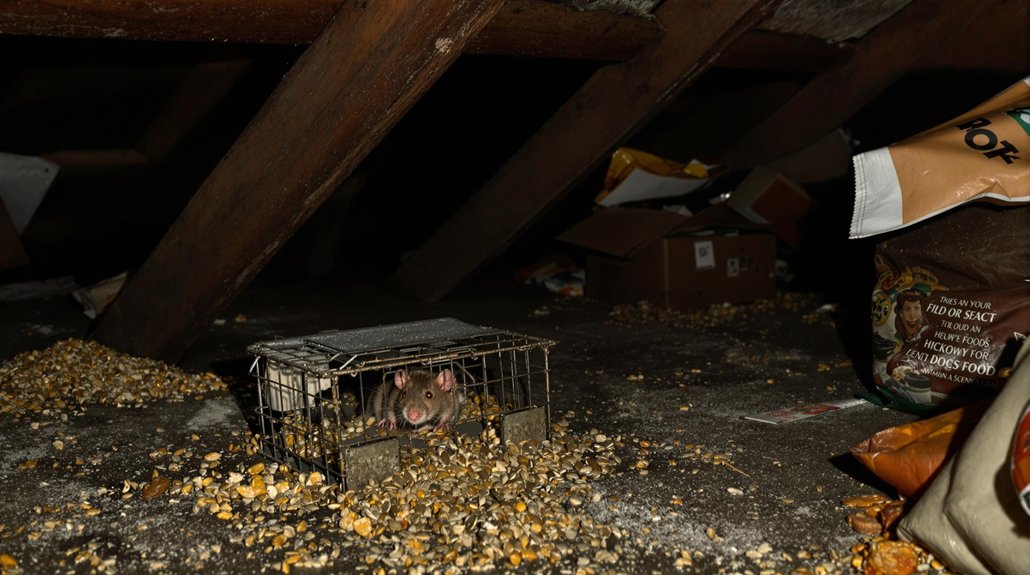Critter Wranglers, LLC Blog
Have an issue? Contact us today

Why Are Rat Traps Not Working in My Attic?
Rat traps in your attic may not be working for several reasons. One common issue is improper trap placement; traps should be near rat entry points and along walls for better visibility. Additionally, if the bait is not appealing, rats may not be attracted. Common missteps include using ineffective bait options like cheese instead of peanut butter or dried fruit. The attic's unique conditions can also hinder trap performance, such as low ceilings and competing food sources from wildlife. Understanding these factors can improve your trapping effectiveness. Discover additional strategies to enhance your approach.
Key Article Highlights
- Traps may be improperly placed; ensure they are easily accessible and visible near entry points and along walls.
- Ineffective bait choices can lead to failure; use fresh peanut butter, dried fruit, or nuts, and change bait regularly.
- Attics may have competing food sources, such as pet food or birdseed, distracting rats from traps.
- Unique attic conditions, like low ceilings and dark corners, can hinder trap visibility and effectiveness.
- Rat behavior varies; they are nocturnal and follow established pathways, so timing and placement are crucial for success.
Improper Trap Placement

Improper trap placement can greatly reduce the effectiveness of rat traps. For traps to work well, they must be easily accessible to rats. Placing traps near entry points and along walls increases the likelihood of capturing these pests. Additionally, trap visibility is vital. If traps are hidden or obstructed, rats may avoid them entirely. Ensuring that traps are visible without drawing too much attention can enhance their performance. It is important to regularly check the traps and adjust their locations if needed. By focusing on trap accessibility and visibility, you can improve your chances of success in managing rat populations effectively. Proper placement is a key step in serving your community and creating a safer environment.
Ineffective Bait Choices
When selecting bait for rat traps, choosing the right type is essential for success. Various bait types can either attract or repel rats, making it vital to select effective rat attractants. Common choices include peanut butter, dried fruit, and nuts. These items are known to entice rats due to their strong scents and appealing tastes. However, some bait types, such as cheese, may not be as effective as once believed. It is important to regularly change the bait to maintain its freshness and effectiveness. Additionally, using a combination of different bait types can increase your chances of attracting rats. By carefully selecting and managing your bait choices, you can improve your success in trapping these unwanted guests.
Rat Behavior and Patterns

Understanding rat behavior and patterns is essential for effectively managing infestations. Rats are known for their nocturnal activity, meaning they are most active during the night. This behavior can make it difficult to notice their presence. They often seek shelter in attics, where they create rat nesting sites using materials like insulation or nearby debris. Recognizing these nesting areas can help in targeting control efforts. Additionally, rats tend to travel the same pathways each night, which can be useful in determining where to place traps. By understanding these habits, homeowners can create a more effective strategy for managing rat populations and ensuring a safe living environment for everyone.
Traps Not Suitable for Attics
While many traps are designed for open spaces, they may not be suitable for use in attics where rats often reside. The unique attic conditions can hinder the effectiveness of various trap types. It's crucial to take into account the environment when selecting traps.
- Low ceilings limiting trap placement
- Insulation that absorbs sound and scent
- Dark corners where rats can hide
- Limited airflow affecting trap sensitivity
- High temperatures making traps ineffective
These factors can prevent traps from working properly. Selecting traps specifically designed for attic conditions guarantees a better chance of capturing rats. Understanding the environment and choosing wisely can make a difference in effective rat control efforts.
Competing Food Sources

Attics can present unique challenges for trapping rats, particularly due to the presence of competing food sources nearby. Many homeowners may not realize that competing wildlife, such as squirrels or raccoons, can also be foraging in the attic. These animals often seek seasonal food supplies, which can distract rats from traps. If there are easily accessible food sources, such as birdseed, pet food, or even stored grains, rats may choose those over bait in traps. To improve trapping success, it is essential to eliminate these competing food sources. Keep the attic clean and seal any openings that allow wildlife access. By addressing these factors, you can create a more effective environment for rat traps to work properly.
Frequently Asked Questions
How Can I Tell if My Attic Has Rats?
To determine if your attic has rats, observe for signs of rat behavior such as droppings, gnaw marks, or nests. Regular attic maintenance can help prevent infestations and guarantee a safe environment for all.
Are There Any Natural Repellents for Rats?
When it comes to natural repellents for rats, an ounce of prevention is worth a pound of cure. Effective natural deterrents include essential oils like peppermint and eucalyptus, which can help keep these pests at bay.
How Often Should I Check the Traps?
Regular trap maintenance is essential for effectiveness. Check traps at least every 24 hours, ensuring proper trap placement. Frequent inspections allow for prompt removal of captured rodents and adjustment of traps as needed for ideal performance.
Can I Use Multiple Trap Types Together?
Mixing multiple trap strategies can enhance effectiveness. Employing diverse traps allows for an extensive trap effectiveness evaluation, increasing chances of capturing rodents. This approach promotes proactive pest management and guarantees a thorough solution to the issue.
What Are the Signs of a Rat Infestation?
Signs of a rat infestation include droppings, gnaw marks, and tracks. Additionally, unusual noises at night may indicate rat behavior. Prompt identification of these infestation signs is essential for effective pest control and prevention strategies.
